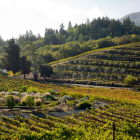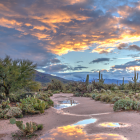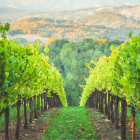At just 30 miles long and few miles wide, Napa Valley might be one of the smallest wine-producing regions on the planet, but it’s also one of the mightiest. Only 4% of California’s wine grapes come from Napa, but their quality – and the consistent skill of the producers handling them – means that the area has a phenomenal global reputation for its wines, which are highly sought-after and often in short supply. If you’re not familiar with these top wineries, you should be.
1. Harlan Estate
Described as the ‘ultimate cult winery’ by luxury title Vanity Fair, Harlan Estate produces critically-acclaimed Bordeaux-style blends from its premises in the western hills of Oakville. The estate’s signature red became a classic from its first vintage in 1990, with its bold Cabernet Sauvignon flavours, massive structure and brilliant aging potential keeping it near the top of collectors’ wish lists.
2. Screaming Eagle
If any wine exemplifies the California cult wine phenomenon it’s Screaming Eagle, a wine brand synonymous with consistent, near-perfect critic scores, high prices, tremendous demand and, of course, short supply. Also set in Oakville, the winery’s offerings command some of the highest prices in California, although the 99-point-scoring 1992 vintage was sold for just $125 back in the day!
3. Opus One
One of Napa’s older wineries, Opus One (pictured) was founded in the late 1970s by two of the biggest names in the winemaking world: local icon Robert Mondavi and Baron Philippe de Rothschild of legendary Bordeaux fame. Their mission? To create a classic, age-worthy red wine from Napa grapes through traditional French techniques. And they succeeded, with Opus One becoming the first American wine sold through negociants on La Place de Bordeaux, alongside France’s elite classified growths.
4. Dominus
Originally known as the Napanook vineyard, Dominus’ roots date back to the very inception of winemaking in Napa – its vines were likely planted by George Yount, who’s widely credited with planting some of the first vines in the region. The estate has been releasing long-lived, classically-styled wines since 1983, and increasing critical acclaim has seen many of them appreciate in value at lightning speeds.
5. Scarecrow
This famed Napa winery takes its name from the loveable Scarecrow in the Wizard of Oz – a tribute to JJ Cohn who, as chief of production for MGM, had been instrumental in making the iconic film. His grandson, Brett Lopez, acquired the property in the early 2000s and after engaging the services of winemaker Celia Welch, Scarecrow released its debut vintage in 2003 to resounding success. Its subsequent vintages quickly established the estate as a key player in both the Napa Valley wine business, and in cult wine legend.
6. Inglenook
One of the original Napa wineries, Inglenook is a name synonymous with Hollywood’s elite. The likes of Clark Gable, Jean Harlow and Carole Lombard were regular visitors throughout the 1930s and 1940s. Despite later falling on hard times, the estate was acquired by director Francis Ford Coppola in 1975, who spent considerable time restoring it to its original magnificent splendour.
7. Colgin
Founded by art collector and philanthropist Ann Colgin in 1992, Colgin has since been acquired by luxury goods group LVMH, and for good reason. While the estate’s wines have evolved over time, today’s most collectible item is the IX Estate Red Wine, an inviting and richly textured blend of Cabernet Sauvignon, Merlot, Cabernet Franc and Petit Verdot that debuted for the 2002 vintage and has remained exceedingly popular – and hard to come by – ever since.
8. Stag’s Leap
Stag’s Leap has played a pivotal role in the history and prestige of Napa Valley, for it was the estate’s 1973 Cabernet Sauvignon that won the famous 1976 Judgement of Paris tasting. Its victory put the region under the global fine wine spotlight, and helped introduce California’s cult Cabs to a French market that had until then been relatively dismissive of New World offerings.
9. Joseph Phelps
Founded in 1973, Joseph Phelps Vineyards was the first high-end winery to give its offerings a proprietary name rather than a varietal label – in this case, Insignia. This was initially to allow for flexibility, giving Phelps and then-winemaker Walter Schug the freedom to make wine from any variety. But soon enough word of its quality had spread, and the blend would focus solely on Bordeaux varieties. It’s not quite as eye-wateringly expensive as some of Napa’s wines due mainly to its relatively large production, but it still features very firmly on the lists of serious collectors.
10. Robert Mondavi
Napa Valley’s original wine icon, Robert Mondavi’s technical and marketing strategies helped bring worldwide recognition to the wines of Napa. He endorsed labelling wines by variety rather than generically, which became the standard for New World wines. Mondavi founded his winery in 1966 with his sons, but the rest of his career saw him lend his name and expertise to multiple estates around California – and indeed further afield. Following his passing in 2008, the Robert Mondavi Institute for Wine and Food Science at the University of California was opened in his honour.






